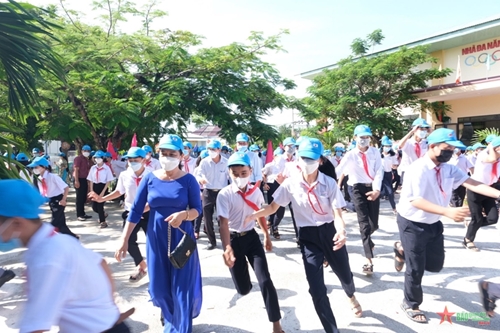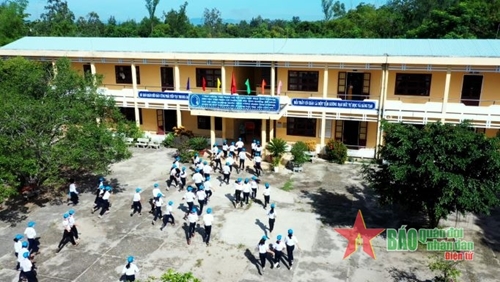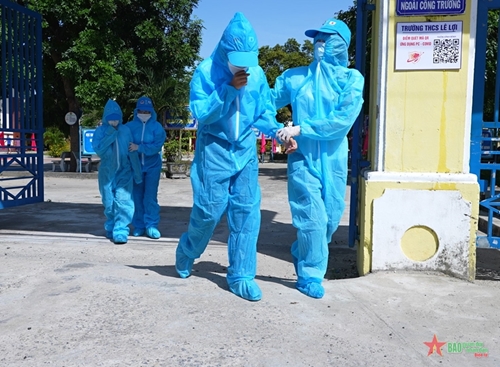    |
 |
|
The exercise draws the participation of nearly 460 students. |
It was jointly organized by the National Steering Committee for Natural Disaster Prevention and Control, the United Nations Development Program (UNDP), Center for Environmental Fluid Dynamics (CEFD), University of Natural Sciences, Vietnam National University, Hanoi.
Nearly 460 students of Le Loi Secondary School in Tam Thang commune, Tam Ky district, Quang Nam province joined the exercise.
According to the National Plan on Responding to Earthquakes and Tsunami and the Prime Minister’s decision No.645, the Manila Trench poses the greatest risk for earthquakes in Vietnam. When a quake with a maximum magnitude of 9.3 strikes in this region, the resulting tsunami risk would affect all of Vietnam’s coastal areas.
    |
 |
|
The participation of students and teachers in the exercise is meaningful. |
In such a case, Central coastal province from Thua Thien Hue to Binh Thuan would be potentially subject to a level 4 disaster risk (equivalent to wave heights between 8-16m). A tsunami would arrive at the shore within 2-4.5 hours and could reach 2-3km inland.
To respond to the risk of tsunamis, the Vietnamese government has focused on tsunami warning and response for coastal localities by implementing several solutions, evacuation plans, and actions for all-level governments, schools and coastal residential areas.
In his speech, Nguyen Van Tien, Deputy General Director of the Vietnam Disaster Management Authority, under the Ministry of Agriculture and Rural Development highlighted the exercise as one of UNDP’s efforts to strengthen local capacity to respond to tsunamis and multi-hazard disasters in the context of the pandemic.
He hoped that after the exercise, local authorities and schools will be fully equipped with knowledge of dealing with tsunamis and have practical experience to be ready for future disasters.
    |
 |
|
A simulated scenario of the exercise is that some COVID-19 cases need to be evacuated. |
For his part, Mr. Takashi Suzuki, an expert from JICA recalled that the 2011 Tohoku earthquake and tsunami claimed the lives of more than 18,000 people. However, in one city, all the elementary and secondary schools managed to evacuate to higher ground before the tsunami hit, saving their lives because the students of these schools were well trained.
The project titled “Response to Tsunami - Multi Natural Disasters in Schools” is part of the UNDP regional project “Partnership for Strengthening School Preparedness for Tsunamis in the Asia-Pacific Region,” which is funded by the Government of Japan and being implemented in 16 Asia-Pacific countries, including Vietnam.
The project contributes to achieving the targets of the U.N. Sendai Framework for Disaster Risk Reduction to reduce lives lost, the number of people affected, and economic damage from natural and human-induced hazards.
Translated by Chung Anh